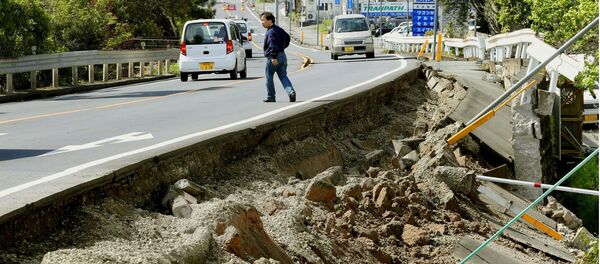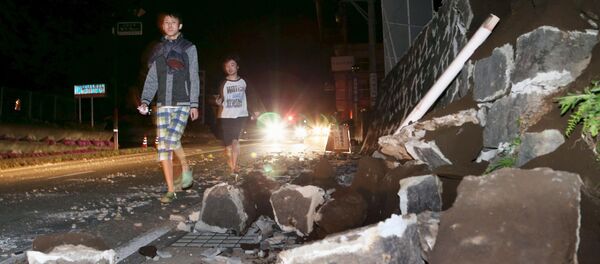“The mud here is so soft, so it is still moving downward as many aftershocks hit,” Tsukasa Goto of the Self-Defense Forces told the Japan Times, noting that at least four homes were swept away during landslides. “The heavy machines finally came this morning as they were blocked by roads that were broken and cut off.”
The Japan Times reported that, as of Monday morning, some 104,900 people were in shelters as aftershocks continue. Due to the continued dangers and damage to main roads, officials have had difficulty getting supplies to the shelters, leaving many without food.
“We are doing our best,” Prime Minister Shinzo Abe told lawmakers critical of the relief effort. “We are striving to improve living conditions for the people who have sought refuge.
The US has been providing assistance, using Osprey tilt-rotor aircraft for the first time in the relief effort. The aircraft takes off like a helicopter, but can cruise like an airplane. Four Okinawa-based MV-22 Ospreys have so far delivered 20 tons of food, blankets, and other supplies.
Meanwhile, the central government has sent 900,000 meals to feed 100,000 evacuees for three days, but Chief Cabinet Secretary Yoshihide Suga has stated that the number of emergency meals must be doubled, to an estimated 1.8 million, as people without water and electricity continue to arrive at shelters.




